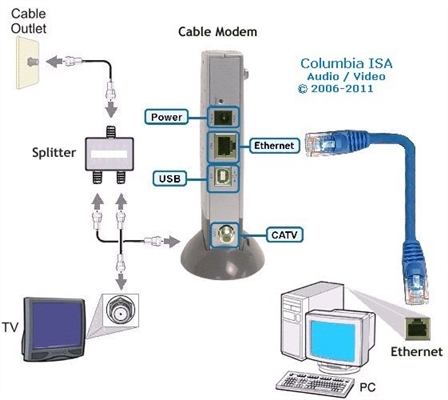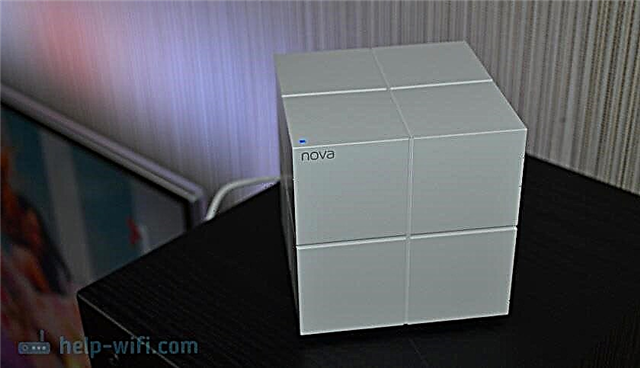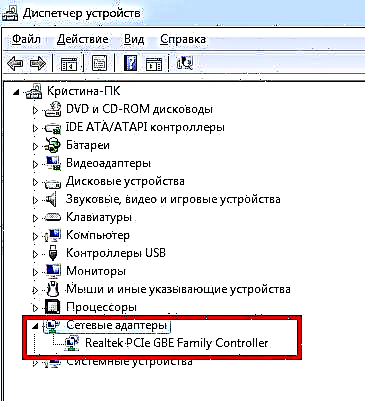Previously, I already published detailed instructions on setting up a local network in Windows 10. But for setting up I used a homegroup, which was removed from Windows 10 (in version 1803 and higher). This means that the old instruction is no longer relevant, since the homegroup in Windows 10 1803 is no longer there. But of course, all the functionality has been preserved, and in the top ten you can still share folders and printers, share a specific folder, get network access to other computers, etc. It's even easier and better, unnecessary settings have been removed. Homegroup was used to simplify local network setup and share files and printers. But in fact, it only complicated the process of setting up a local network with its convoluted settings. It's easier to manually open the public access and share the folder over the network than to mess with setting up a homegroup.
Typically, a local network is configured between computers that are connected to each other through a router (via Wi-Fi, network cable), or a switch. If necessary, you can connect two computers directly using a network cable, but this method is unlikely to be used by anyone else. You can share folders in Windows 10 not only with other computers, but also with mobile devices. For example, you can access shared folders on your computer from mobile devices, TV set-top boxes and other devices that run on Android. But most often the local network is configured specifically for the exchange of files between several computers. If there are computers on the network with Windows 7 and Windows 8, then on them the sharing settings are configured in much the same way as in Windows 10. The folder that is shared on a computer with Windows 10 will be displayed without problems in the network environment on the computer with Windows 7 and vice versa. The main thing is that network discovery is enabled on both computers.
Preparing to set up a local network in Windows 10
When connected to a router via a cable or Wi-Fi network, Windows 10 assigns a network profile to the connection: "Public" or "Private"... Everything is simple here. "Public" is when a computer is connected to a public, foreign network. For example, somewhere in a cafe, hotel, at a friend's house, etc. "Private" is a connection to a home network. It is advisable to install this profile only when you are connected to your network (to your router, which is reliably protected. See the article maximum protection of a Wi-Fi network and router from other users and hacking). Depending on the selected profile, some of the sharing and firewall settings change.
To set up a local network, I recommend setting the "Private" network profile for Ethernet or Wi-Fi connections. Well, and accordingly, open shared access to files only in those networks that you trust (which you control). On the topic of changing the network profile, I already wrote detailed instructions: home (private) and public (public) Windows 10 network.
This is not difficult to do. In the properties of the Ethernet connection:

In the properties of the Wi-Fi network:

You have assigned the required network profile to the connection, you can proceed to configuring the local network.
Configuring Sharing Options in Windows 10
We need to open the "Advanced Sharing Options" window. This can be done through the "Network and Sharing Center", or in the options, under "Network and Internet" - "Sharing options".

For profile "Private (current profile)" we need to set the following settings:
- Enable network discovery - if network discovery is enabled, then our computer will see other computers on the network, and will be visible to other computers.
- Turn on file and printer sharing - after enabling, all folders and printers to which general access is allowed will be available to other devices on this local network. By default, these are the standard shared folders (Shared Music, Shared Documents, Shared Videos, etc.). Later in the article, I'll show you how to share any folder on your computer.

We also change the following settings for the profile "All networks":
- Enable sharing so that network users can read and write files in shared folders.
- Disable password protected sharing. For sharing with or without password protection, the difference is whether you need to enter a password when accessing a shared folder on a given computer. On a home network, you usually don't need a password. But if necessary, you can leave password protection. Then other computers will be prompted for username and password (remote computer user).

Be sure to click on the button "Save changes"!
All! Configuring a local network in Windows 10 is complete.
Accessing shared folders from another computer on the local network
After setting up sharing, we can access shared folders from other computers that are on the same network (connected through the same router or switch).
On other computers, it is advisable to perform the same sharing settings as I showed above. If you do this, a computer from Network Neighborhood will immediately appear in Explorer on the "Network" tab. Otherwise, network discovery will have to be enabled from the explorer itself (screenshots below).
You can go directly to the explorer, to the "Network" tab. If network discovery is disabled on this computer, you will see a message: "Network discovery is disabled. Networked computers and devices are not visible".

Click "OK" and a yellow bar will appear on top, where you can "Turn on network discovery and file sharing."

And if the network to which you are connected is assigned the "Public" status, then another window will appear. Select the following option: "No, make the network this computer is connected to private."

After that, "Computers" will immediately appear on the "Network" tab in the explorer. Our computer will also be displayed along with other computers from the local network.

Everything is ready!
If you cannot access a shared folder on another computer, then you need to check whether shared access to files and folders is allowed in the firewall (antivirus) settings for the private network on the computer on which we shared these folders. You can temporarily (for checking) stop the firewall (antivirus). We also have a separate, detailed article on this topic: shared folders, network computers, flash drives, drives are not displayed on the "Network" tab of Windows Explorer.
We just set up a local area network between two computers running Windows 10. Both computers can access each other over the network (in my case, via Wi-Fi, through a router). By default, only individual shared folders are accessible. To exchange files between computers, you can use these folders (copy files into them, view, delete), or manually open shared access to other folders that are located on the computer's hard drive. Next, I'll show you in more detail how to share a folder in Windows 10.
How to share a folder in Windows 10?
In Windows 10, you can share a file or folder (share a folder) in just a few seconds. I will also show you how to stop sharing a folder / file and see which folders are being shared.
Just right-click on any folder or file, hover over the menu "Grant access to" and choose "Individual people".

Next, you need to select the user for whom the shared access to the folder will be provided. On your home network, you can select "Everyone". In this case, all network members will have access to the file / folder. You can create a new user and use their username / password to access the folder from other computers (if you have not disabled password-protected sharing).

For the Everyone user (or a new user), you can change the permissions on a file or folder in Windows 10. By default, the folder / file is read-only. You can set "Read and Write". Then other users on the network will be able to change / delete files in the folder, write new ones, edit files.

After clicking on the "Share" button, a window will appear in which the network address to the file or folder will be indicated. This address can be copied and used to access this resource from other computers in the local network (just go to the address in the explorer).

It is not necessary to use the address to go to the folder that we have shared. On another computer, you can simply go to the "Network" section in Windows Explorer. We open the required computer from our local network and go to the shared folder to which we have just opened access.

Since I have set read and write permissions for this folder, I can edit, delete and create new files in this folder without any problems. The rights apply to all files in the shared folder.
How to turn off sharing a folder or file in Windows 10?
Just click on a folder or file with the right mouse button, select "Grant access to" and click on "Make unavailable".

That's how easy it is in Windows 10 to stop sharing a folder / file.
Please note that the item "Make Unavailable" ("Close Access", "Turn Off Sharing") appears in the properties of any folder, even which is not shared. It should be so.
How do I see all the folders and files that are shared on my computer?
To do this, go to the address in the explorer localhost

A folder will open, which will reflect other folders and files that are shared on this computer.
Afterword
For me, as well as probably for many, a local network has always been something complicated and incomprehensible. It seems that you understand what it is for and how you can use it, but it is not entirely clear how it works and how to configure it. There are some incomprehensible and confusing parameters, general access, rights, accounts, etc., but if you figure it out, or even better configure it yourself, you immediately understand that there is nothing complicated about it. Even without this homegroup, which was removed in Windows 10 1803, everything can be easily configured and used to share files, folders and printers on the local network.
Update: prepared instructions for connecting and configuring a network printer in Windows 10.
Leave your comments, questions and additions. If I forgot something, or wrote something wrong, share the useful information in the comments! I will gladly edit and supplement the article.











